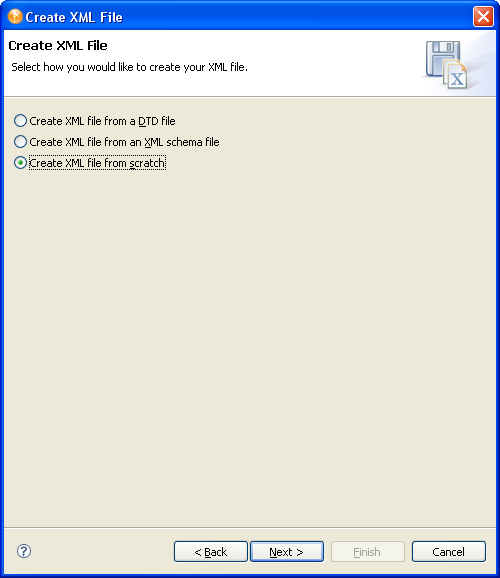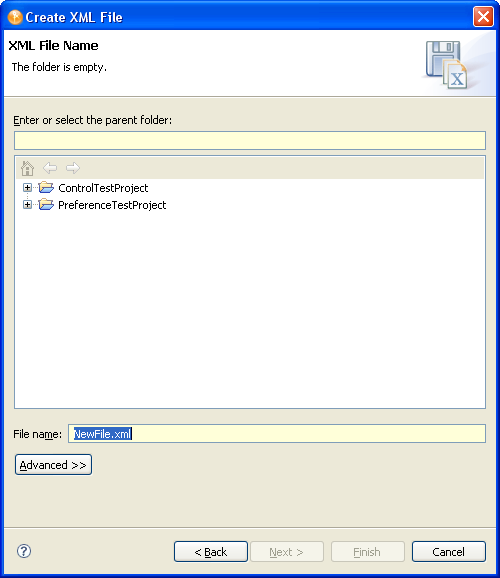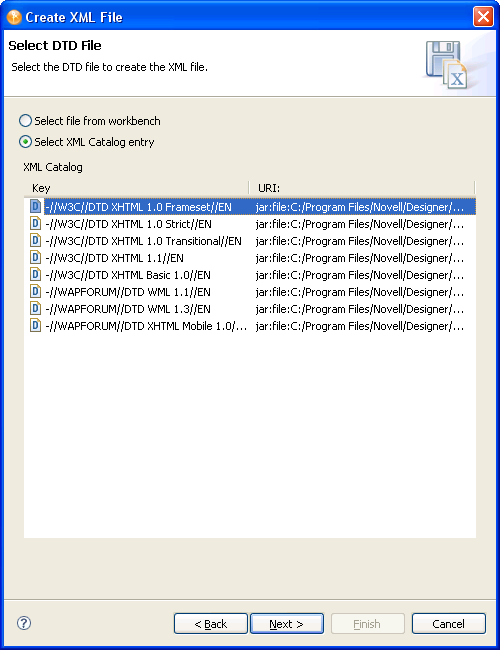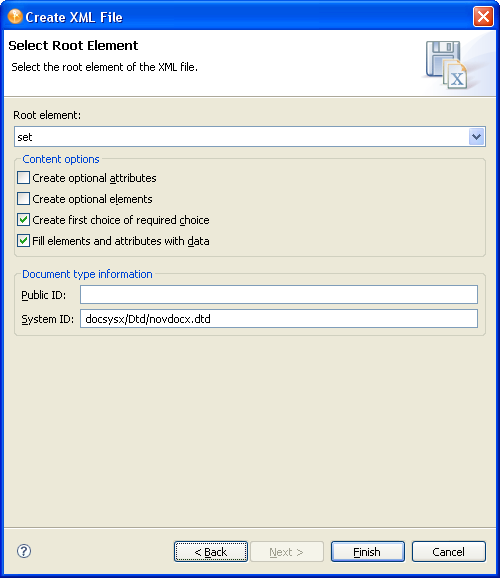21.1 About the Novell XML Editor
The Novell XML Editor lets you create, edit, and validate XML files.You can edit XML files in either the Source or Tree editor. You can customize the certain behaviors, such as code completion, in the Preferences tab.
The Novell XML editor is built on the Web Standard Tools (WST) project architecture.
21.1.1 Creating XML Files
You use the to create new XML Files. The wizard can create an empty XML file or a generated XML file based on an XML schema or DTD. Generated files contain skeleton XML data that is generated based on a given root element and an XML Schema or DTD.
To launch the New XML File Wizard:
-
Select
-
Open the XML Folder, select then select .

-
Choose one of the source options on which you want to base the new XML file.
-
Click . The wizard prompts you to supply the name and location for the new file.

-
Fill in the fields as follows:
-
If you chose to create the file from scratch, click , otherwise click . You are prompted for the catalog entry (shown below) or Schema or DTD.

-
Fill in the fields as follows, then click Next:
-
Click . You are prompted to specify the Root Element.

-
Fill in the fields as follows:
-
Click .
You can launch the editor by double-clicking an existing XML file.
21.1.2 Validating Files
You can validate your XML files using the right-mouse menu in the Source editor. If any validation errors or warnings occur, they are displayed in the Problems view.
21.1.3 Outline View
The editor provides an Outline view containing a tree that displays the structure of the XML document including its nodes are the elements, attributes, text nodes, comments, and so on from the document.
The Outline tree is closely connected to the Source editor and the Tree editor. When you edit a document in either the Source or Tree editor, the Outline tree updates automatically. If the editing results in a document that isn't well-formed, the structure displayed in the tree might seem odd. But the structure corresponds as closely as possible to the well-formed parts of the document.
Editing or generally moving the cursor in the Source Editor or changing the selection in the Tree editor expands and selects the corresponding node (if possible) in the Outline tree. This makes it possible to easily locate the current place in the document.
In a similar fashion, selecting a node in the Outline tree moves the cursor in the Source editor to the textual position of the node (if the Source editor is active) or change the selection in the Tree editor (if the Tree editor is active). The Outline view provides structural editing capabilities such as inserting and removing nodes.